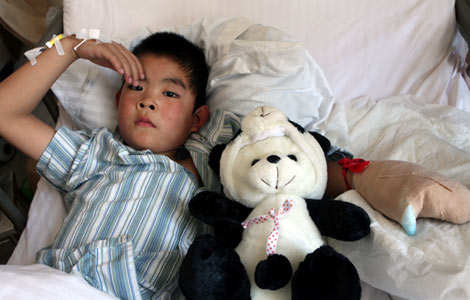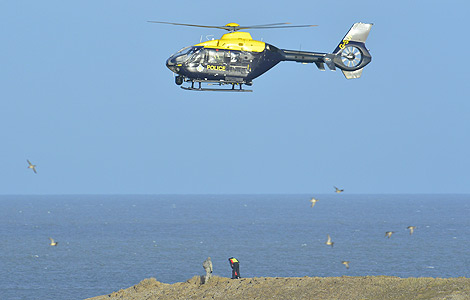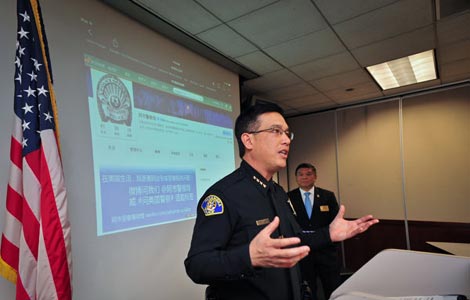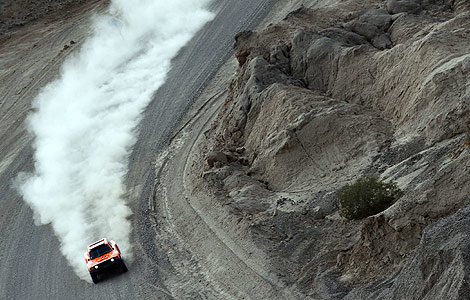CRH trains take a leading role
Updated: 2014-01-10 13:44
(Xinhua)
|
||||||||
The government mobilized major railway research and production forces, including 25 universities, 11 research institutes and 51 State-level laboratories and engineering centers. Input between 2006 and 2010 totaled 2.2 billion yuan.
China's more than 10,000 kilometers of high-speed railways, almost doubles the combined length of Europe's and Japan's railways. The Beijing-Guangzhou Railway (2,300 km), the Beijing-Shanghai Railway (1,318 km) and the Harbin-Dalian Railway (921 km), are the three longest high-speed railways in the world.
The Beijing-Shanghai Railway triggered independent development of CSR's CRH380A and China North Railway's CRH380B because no products were on offer from the rest of the world. Innovation was a must when it came to building railways in areas where geographic conditions were harsh, such as the Harbin-Dalian Railway, which runs on high-latitude frozen soil. China's railway achievements in these areas were pioneering and original.
The whole package was world leading, whether in railroad construction, equipment designing and manufacturing, or vehicle operations and maintenance, said Wang Mengshu, a railway expert and an academician of the Chinese Academy of Engineering. "It's like the Swiss watch. When talking about high-speed railway, people look to China," he added.
However, China still relies on imports for braking systems.
A railway expert who preferred not to be named said China was capable of developing braking systems for high-speed trains. Yet, apart from cost, there was another concern. Safety or rather, the responsibility for operational safety.
The country's railway operators and passengers still remember an accident that happened on the evening of July 23, 2011, when two CRH trains collided on the newly opened Ningbo-Wenzhou Railway. The pileup caused four carriages of the front train to derail, killing 40 people and injuring 172 others.
Inadequate emergency response and poor handling of the accident were strongly criticized. It cast doubt on the safety levels of the country's rapidly developing high-speed railways.
The investigation, in which academician Wang served as deputy chief of the expert team, reported 120 days later that the Wenzhou accident was more a result of erroneous management than technical deficiency. But the report failed to deliver a clear message. The negative impact was huge, especially on the overseas market.
The CRH380A train was designed according to international standards and in some areas even stricter, said Deng Xiaojun, deputy chief engineer of Qingdao Sifang. "We have a rounded mechanism to ensure the train's safety operation," Deng said.
China's high-speed railways have been built largely on elevated constructed land bases, which has helped avoid derailments and made maintenance easy. The train's signaling and braking systems were also effective in preventing collisions, said Wang. "Currently our CRH trains run at a normal, regular interval of six minutes on the same line. With subway trains, this is reduced to two minutes. We are very confident in the operational safety of our railway system," he said.

 Fidel Castro makes rare public appearance
Fidel Castro makes rare public appearance
 Migrants feel pain of separation
Migrants feel pain of separation
 Websites to be liable for sales of bad food, medicine
Websites to be liable for sales of bad food, medicine
 Largest sushi mosaic created in HK
Largest sushi mosaic created in HK
 UK police pick through US helicopter crash site
UK police pick through US helicopter crash site
 Riding the waves down under
Riding the waves down under
 The long-living rich in China
The long-living rich in China
 US skiing star Lindsey Vonn out of Sochi Olympics
US skiing star Lindsey Vonn out of Sochi Olympics
Most Viewed
Editor's Picks

|

|

|

|

|

|
Today's Top News
US police all a-twitter about Weibo
China's role in Middle East will be enhanced: FM
Abe's new frontiers: Africa, Middle East
Rodman sorry for Bae comment
Reunion proposal rejected by DPRK
Apology urged for insulting Chinese
China's oil pipelines riddled with defects
Higher targets set for emission reduction
US Weekly

|

|






